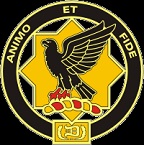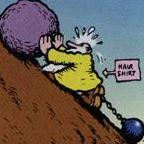Maliki
Posts: 2217
Joined: 12/25/2002
Status: offline

|
quote:
ORIGINAL: Mangudai
quote:
A well known US scientist (departed now though), Carl Sagan, a man I personally find incapable of uttering something that might sound outright stupid, thus I am inclined to consider it seriously, stated that fully 50% of the US adult population is unaware the earth revolves around the sun (and not the other way around).
50%
Think about that for a minute. Take two minutes if you like.
Now I can only conclude from that, one conclusion.
50% of the US adult population is incredible undereducated.
You think it's that simple huh? Then tell me one experiment that proves the Earth goes around the Sun. According to Einstein no such experiment is possible. Because the freefall reference frame is a locally inertial reference frame, Einstein called this "the happiest thought of my life".
You probably think I'm nuts right... let me explain with an example. Are astronauts in the space shuttle weightless? According to Newton's Law of Gravity at 300 mi above the Earth they have 95% of the weight they have on Earth's surface. They only seem to be weightless because the space shuttle and everything on board is falling toward the Earth at exactly the same rate. From inside the space shuttle there is no experiment you can do to prove that you are accelerating toward the Earth.
There is a mysterious large blue globe that you can see out the window, and also a very very tiny tidal effect which seems related to this globe. But, this does not prove the space shuttle orbits the Earth.
Copernicus provided no new data to support his theory. Actually he was a Sun-worshiper. He used existing data which Ptolemaic astronomers already accepted. Copernicus' theory described exactly when retrograde planetary motion could happen. Ptolemaic astronomers couldn't derive it from first principles, but they already knew the answer based on observations. So there were no new suprises.
Galileo's observations of the phases of Venus provided strong evidence that Venus goes around the sun. He also found that Jupiter has moons, and thus not everything goes around the Earth. However, Tycho Brahe did not think this was a problem for the Earth centered model. He postulated that the "solar system" is centered around the Sun, but the whole "solar system" goes around the Earth.
Kepler and Newton liked the "harmony" of Copernicus' model better but they did not have new experiments to confirm it. In the 18th centruy astronomers tried to calculate the orbits of all the planets based on Newton's Law of Gravity. The predicted orbits of Uranus and Mercury did not match the theory. Adams and Leverier hypothesized that another planed (Neptune) was interfering with Uranus. They worked out the orbit of Neptune accurately on pencil and paper before astronomers ever saw it. This was enough to convince most of the hold-outs for the Sun centered model.
People also thought there must be a planet (Vulcan) interfering with the orbit of Mercury, but Vulcan was never found. This problem was unresolved until Einstein's General Relativity described the hyperbolic (non-Euclidean) warping of space-time due to gravity.
There is also an experiment called Foulcault's pendulum which proves that the Earth spins once per day. This unrelated to orbiting, and is no problem for Tycho Brahe's model.
Preach on 
_____________________________
"..if you want to make a baby cry, first you give it a lollipop. Then you take it away."
|
 Printable Version
Printable Version





















 .Theres no place for that when conjecture fills the bill quite nicely,thank you very much
.Theres no place for that when conjecture fills the bill quite nicely,thank you very much


 New Messages
New Messages No New Messages
No New Messages Hot Topic w/ New Messages
Hot Topic w/ New Messages Hot Topic w/o New Messages
Hot Topic w/o New Messages Locked w/ New Messages
Locked w/ New Messages Locked w/o New Messages
Locked w/o New Messages Post New Thread
Post New Thread